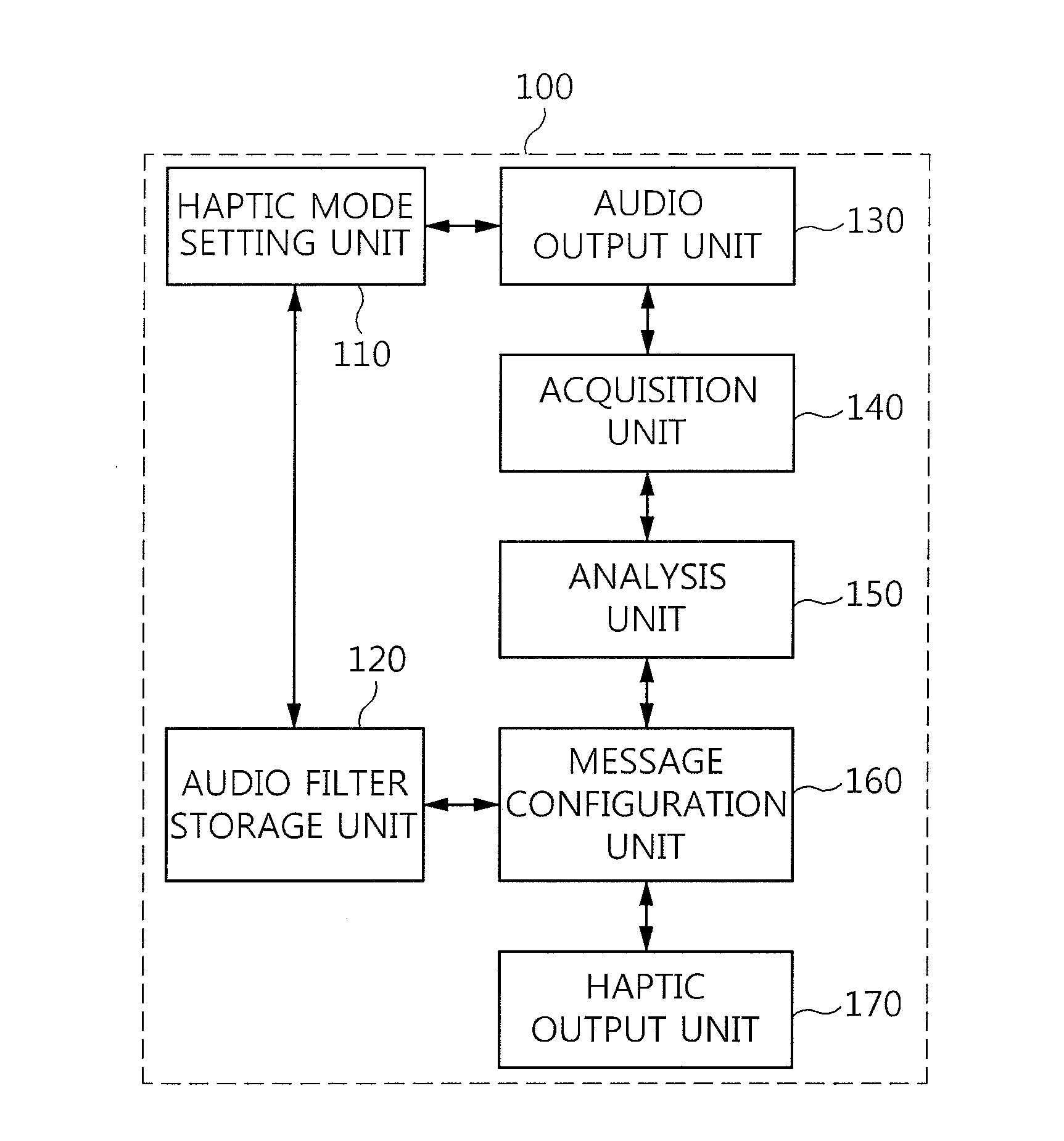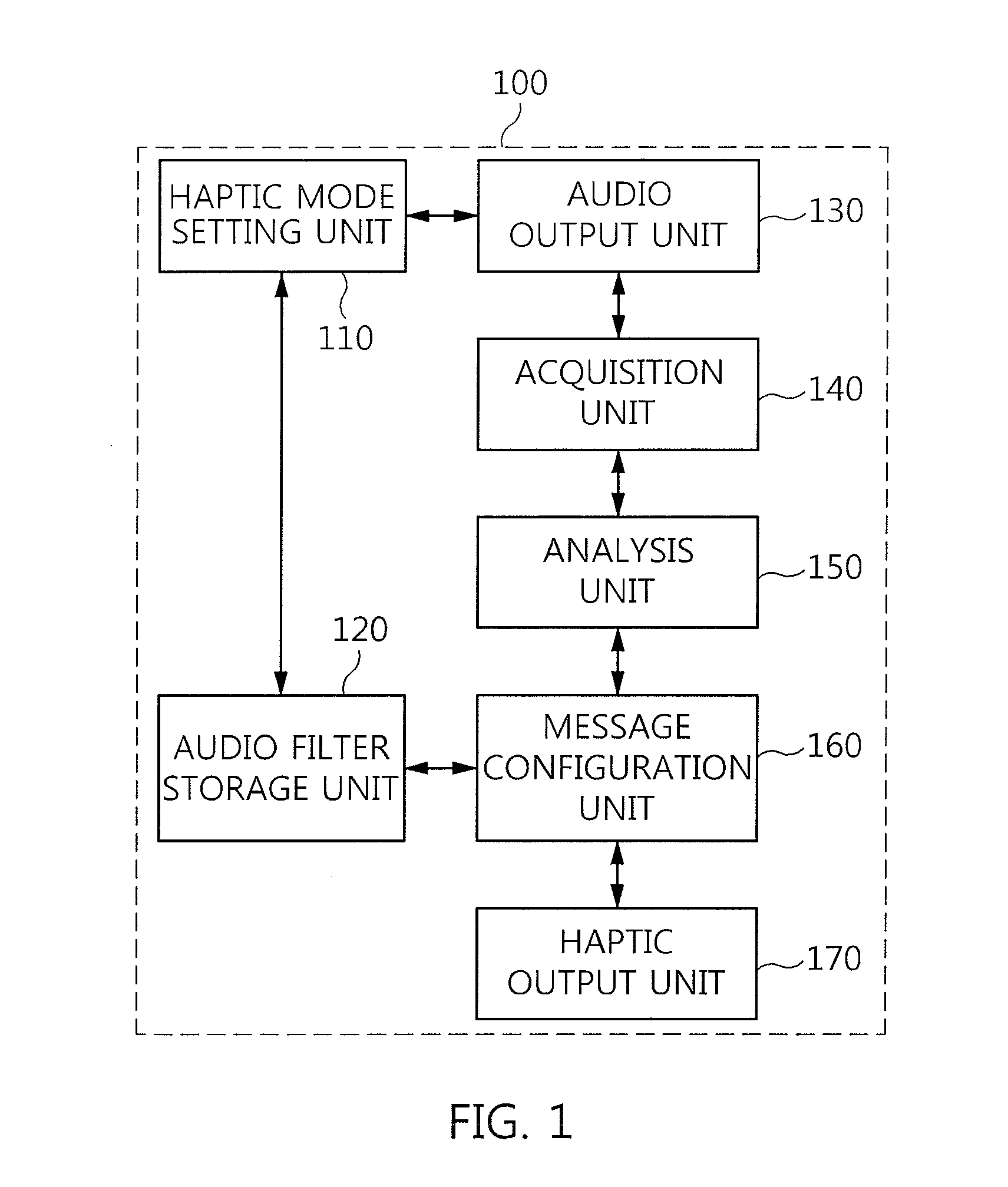Apparatus and method for providing haptic effect using sound effect
a technology of sound effect and apparatus, applied in the field of apparatus and method for providing a haptic effect using a sound effect, can solve the problems of user inconvenience, analog signal method, and output of haptic feedback, and achieve the effect of maximizing the effective user experien
- Summary
- Abstract
- Description
- Claims
- Application Information
AI Technical Summary
Benefits of technology
Problems solved by technology
Method used
Image
Examples
Embodiment Construction
[0051]Embodiments of the present invention will be described with reference to the accompanying drawings in order to describe the present invention in detail so that those having ordinary knowledge in the technical field to which the present pertains can easily practice the present invention. It should be noted that like reference numerals are used to designate like elements throughout the drawings as much as possible. In the following description of the present invention, detailed descriptions of known functions and constructions which are deemed to make the gist of the present invention obscure will be omitted.
[0052]First, the characteristics of an apparatus and method for providing a haptic effect using a sound effect according to embodiments of the present invention will be described below.
[0053]A conventional apparatus for providing a haptic effect provides haptic effects in response to sound effects generated by an electronic device using a predetermined audio filter. The conv...
PUM
 Login to View More
Login to View More Abstract
Description
Claims
Application Information
 Login to View More
Login to View More - R&D
- Intellectual Property
- Life Sciences
- Materials
- Tech Scout
- Unparalleled Data Quality
- Higher Quality Content
- 60% Fewer Hallucinations
Browse by: Latest US Patents, China's latest patents, Technical Efficacy Thesaurus, Application Domain, Technology Topic, Popular Technical Reports.
© 2025 PatSnap. All rights reserved.Legal|Privacy policy|Modern Slavery Act Transparency Statement|Sitemap|About US| Contact US: help@patsnap.com



